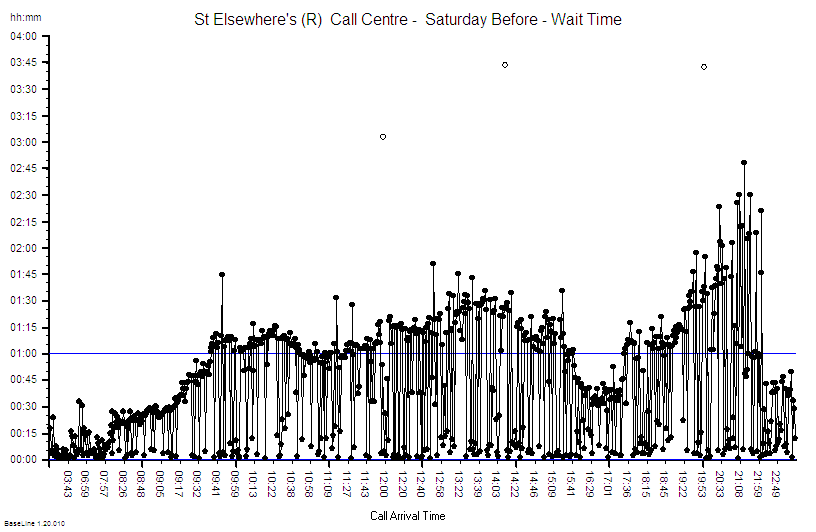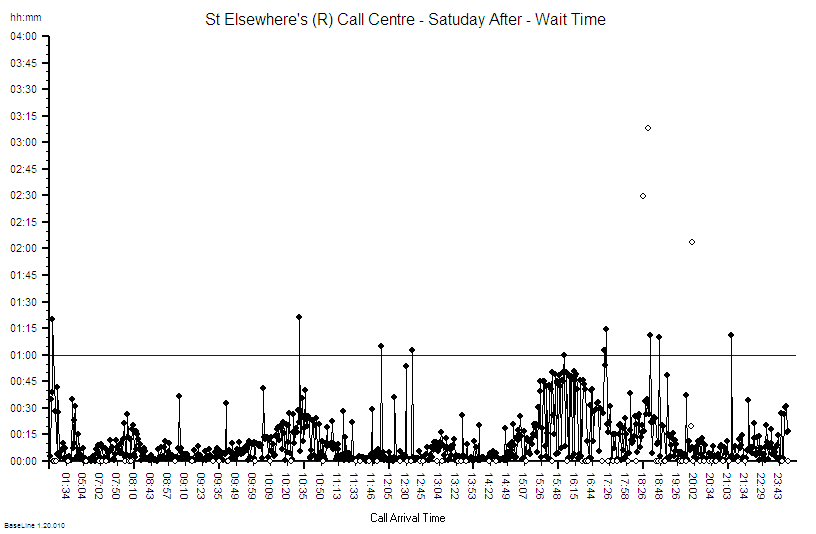 [Beep] It was time again for the weekly Webex coaching session. Bob dialled into the teleconference to find Leslie already there … and very excited.
[Beep] It was time again for the weekly Webex coaching session. Bob dialled into the teleconference to find Leslie already there … and very excited.
<Leslie> Hi Bob, I am so excited. I cannot wait to tell you about what has happened this week.
<Bob> Hi Leslie. You really do sound excited. I cannot wait to hear.
<Leslie> Well, let us go back a bit in the story. You remember that I was really struggling to convince the teams I am working with to actually make changes. I kept getting the ‘Yes … but‘ reaction from the sceptics. It was as if they were more comfortable with complaining.
<Bob> That is the normal situation. We are all very able to delude ourselves that what we have is all we can expect.
<Leslie> Well, I listened to what you said and I asked them to work through what they predicted could happen if they did nothing. Their healthy scepticism then worked to build their conviction that doing nothing was a very dangerous choice.
<Bob> OK. And I am guessing that insight was not enough.
<Leslie> Correct. So then I shared some examples of what others had achieved and how they had done it, and I started to see some curiosity building, but no engagement still. So I kept going, sharing stories of ‘what’, and ‘how’. And eventually I got an email saying “We have thought about what you said about a one day experiment and we are prepared to give that a try“.
<Bob> Excellent. How long ago was that?
<Leslie> Three months. And I confess that I was part of the delay. I was so surprised that they said ‘OK‘ that I was not ready to follow on.
<Bob> OK. It sounds like you did not really believe it was possible either. So what did you do next?
<Leslie> Well I knew for sure that we would only get one chance. If the experiment failed then it would be Game Over. So I needed to know before the change what the effect would be. I needed to be able to predict it accurately. I also needed to feel reassured enough to take the leap of faith.
<Bob> Very good, so did you use some of your ISP-2 skills?
<Leslie> Yes! And it was a bit of a struggle because doing it in theory is one thing; doing it in reality is a lot messier.
<Bob> So what did you focus on?
<Leslie> The top niggle of course! At St Elsewhere® we have a call-centre that provides out-of-office-hours telephone advice and guidance – and it is especially busy at weekends. We are required to answer all calls quickly, which we do, and then we categorise them into ‘urgent’ and ‘non-urgent’ and pass them on to the specialists. They call the clients back and provide expert advice and guidance for their specific problem.
<Bob>So you do not use standard scripts?
<Leslie> No, that does not work. The variety of the problems we have to solve is too wide. And the specialist has to come to a decision quite quickly … solve the problem over the phone, arrange a visit to an out of hours clinic, or to dispatch a mobile specialist to the client immediately.
<Bob> OK. So what was the top niggle?
<Leslie> We have contractual performance specifications we have to meet for the maximum waiting time for our specialists to call clients back; and we were not meeting them. That implied that we were at risk of losing the contract and that meant loss of revenue and jobs.
<Bob> So doing nothing was not an option.
<Leslie> Correct. And asking for more resources was not either … the contract was a fixed price one. We got it because we offered the lowest price. If we employed more staff we would go out of business. It was a rock-and-a-hard-place problem.
<Bob> OK. So if this was ranked as your top niggle then you must have had a solution in mind.
<Leslie> I had a diagnosis. The Vitals Chart© showed that we already had enough resources to do the work. The performance failure was caused by a scheduling policy – one that we created – our intuitively-obvious policy.
<Bob> Ah ha! So you suggested doing something that felt counter-intuitive.
<Leslie> Yes. And that generated all the ‘Yes .. but‘ discussion.
<Bob> OK. Do you have the Vitals Chart© to hand? Can you send me the Wait-Time run chart?
<Leslie> Yes, I expected you would ask for that … here it is.
 <Bob> OK. So I am looking at the run chart of waiting time for the call backs for one Saturday, and it is in call arrival order, and the blue line is the maximum allowed waiting time is that correct?
<Bob> OK. So I am looking at the run chart of waiting time for the call backs for one Saturday, and it is in call arrival order, and the blue line is the maximum allowed waiting time is that correct?
<Leslie>Yup. Can you see the diagnosis?
<Bob> Yes. This chart shows the classic pattern of ‘prioritycarveoutosis’. The upper border is the ‘non-urgents’ and the lower group are the ‘urgents’ … the queue jumpers.
<Leslie> Spot on. It is the rising tide of non-urgent calls that spill over the specification limit. And when I shared this chart the immediate reaction was ‘Well that proves we need more capacity!‘
<Bob> And the WIP chart did not support that assertion.
<Leslie> Correct. It showed we had enough total flow-capacity already.
<Bob> So you suggested a change in the scheduling policy would solve the problem without costing any money.
<Leslie> Yes. And the reaction to that was ‘That is impossible. We are already working flat out. We need more capacity because to work quicker will mean cutting corners and it is unsafe to cut-corners‘.
<Bob> So how did you get around that invalid but widely held belief?
<Leslie> I used one of the FISH techniques. I got a few of them to play a table top game where we simulated a much simpler process and demonstrated the same waiting time pattern on a hand-drawn run chart.
<Bob> Excellent. Did that get you to the ‘OK, we will give it a go for one day‘ decision.
<Leslie>Yes. But then I had to come up with a new design and I had test it so I know it would work.
<Bob> Because that was a step too far for them. And It sounds like you achieved that.
<Leslie> Yes. It was tough though because I knew I had to prove to myself I could do it. If I had asked you I know what you would have said – ‘I know you can do this‘. And last Saturday we ran the ‘experiment’. I was pacing up and down like an expectant parent!
<Bob> I expect rather like the ESA team who have just landed Rosetta’s little probe-child on an asteroid travelling at 38,000 miles per hour, billions of miles from Earth after a 10 year journey through deep space! Totally inspiring stuff!
<Leslie> Yes. And that is why I am so excited because OUR DESIGN WORKED! Exactly as predicted.
<Bob> Three cheers for you! You have experienced that wonderful feeling when you see the effect of improvement-by-design with your own eyes. When that happens then you really believe what opportunities become possible.
<Leslie> So I want to show you the ‘after’ chart …
<Bob> Wow! That is a spectacular result! The activity looks very similar, and other than a ‘blip’ between 15:00 and 19:00 the prioritycarveoutosis has gone. The spikes have assignable causes I assume?
<Leslie> Spot on again! The activity was actually well above average for a Saturday. The subjective feedback was that the new design felt calm and under-control. The chaos had evaporated. The performance was easily achieved and everyone was very positive about the whole experience. The sceptics were generous enough to say it had gone better than they expected. And yes, I am now working through the ‘spikes’ and excluding them … but only once I have a root cause that explains them.
<Bob> Well done Leslie! I sense that you now believe what is possible whereas before you just hoped it would be.
<Leslie> Yes! And the most important thing to me is that we did it ourselves. Which means improvement-by-design can be learned. It is not obvious, it feels counter-intuitive, so it is not easy … but it works.
<Bob> Yes. That is the most important message. And you have now earned your ISP Certificate of Competency.

